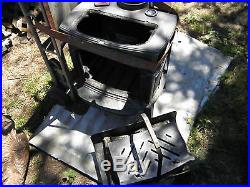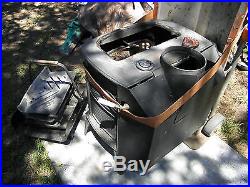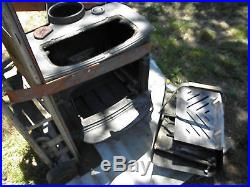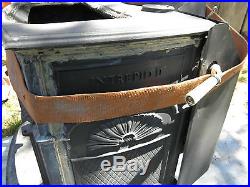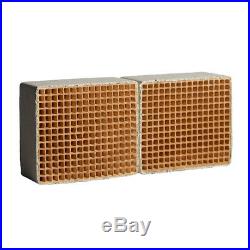

Genuine Condar Ceramic Catalytic Combustors. Fabricated in the foothills of Western North Carolina. Replacing a worn out combustor brings new life to an aging stove! Burn times can increase by 50%, while realizing twice the heat from the same piece of wood. Your chimney stays much cleaner and safer! , and you’re protecting our valuable air quality. For most stove owners, savings in wood alone pay for the replacement combustor many times over, not to mention increased safety and convenience. This 4″ long x 3.5″ wide x 2 thick Combustor fits Woodstock Soapstone Fireview (pre 1997) catalytic wood stoves. A note about combustor / catalyst gaskets: Don’t install gasket around the combustor, even if your previous catalyst was wrapped in gasket. Simply install this combustor in stove’s catalyst receptacle. How they’re made. All Condar catalytic combustors are made of high-quality materials, and approved by the U. During the manufacturing process, ceramic honeycomb is dipped in a brown wash containing platinum and palladium – two elements scientifically engineered to maximize the catalytic reaction. The item “Condar Catalytic Combustor for Woodstock Soapstone Fireview wood stove (CC-505)” is in sale since Monday, August 3, 2015. This item is in the category “Home & Garden\Home Improvement\Heating, Cooling & Air\Air Conditioners & Heaters\Furnaces & Central Heating Systems”. The seller is “woodstovepro” and is located in Columbus, North Carolina. This item can be shipped to United States.
- MPN: CC-505
- Brand: Condar: “The Combustor Experts”
- Model: Ceramic
- Country of Manufacture: United States
- Material: Ceramic

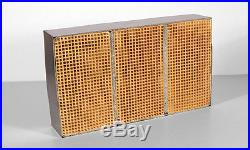

Genuine Condar Ceramic Catalytic Combustors. Fabricated in the foothills of Western North Carolina. Replacing a worn out combustor brings new life to an aging stove! Burn times can increase by 50%, while realizing twice the heat from the same piece of wood. Your chimney stays much cleaner and safer! , and you’re protecting our valuable air quality. For most stove owners, savings in wood alone pay for the replacement combustor many times over, not to mention increased safety and convenience. This 10.6 long” x 6″ wide x 2 thick Combustor fits the Buck Stove 91 Bay catalytic wood stove. A note about combustor / catalyst gaskets: Don’t install gasket around the combustor, even if your previous catalyst was wrapped in gasket. Simply install this combustor in stove’s catalyst receptacle. How they’re made. All Condar catalytic combustors are made of high-quality materials, and approved by the U. During the manufacturing process, ceramic honeycomb is dipped in a brown wash containing platinum and palladium – two elements scientifically engineered to maximize the catalytic reaction. The item “Condar Catalytic Combustor for Buck 91 Bay wood stove (CC-601)” is in sale since Friday, November 4, 2011. This item is in the category “Home & Garden\Home Improvement\Heating, Cooling & Air\Air Conditioners & Heaters\Furnaces & Central Heating Systems”. The seller is “woodstovepro” and is located in Columbus, North Carolina. This item can be shipped to United States.
- MPN: CC-601
- Brand: Condar: “The Combustor Experts”
- Model: Ceramic
- Country of Manufacture: United States
- Material: Ceramic

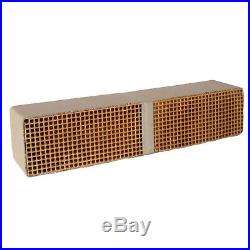
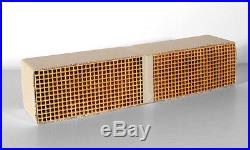

Genuine Condar Ceramic Catalytic Combustors. Fabricated in the foothills of Western North Carolina. Replacing a worn out combustor brings new life to an aging stove! Burn times can increase by 50%, while realizing twice the heat from the same piece of wood. Your chimney stays much cleaner and safer! , and you’re protecting our valuable air quality. For most stove owners, savings in wood alone pay for the replacement combustor many times over, not to mention increased safety and convenience. This 14″ long x 3.1″ wide x 3 thick Combustor fits Fireplace Xtrordinair Catalytic Fireplaces. A note about combustor / catalyst gaskets: Don’t install gasket around the combustor, even if your previous catalyst was wrapped in gasket. Simply install this combustor in stove’s catalyst receptacle. How they’re made. All Condar catalytic combustors are made of high-quality materials, and approved by the U. During the manufacturing process, ceramic honeycomb is dipped in a brown wash containing platinum and palladium – two elements scientifically engineered to maximize the catalytic reaction. The item “AMERICAN-BUILT Catalytic Combustor for Xtrordinair stoves by Condar (CC-405)” is in sale since Tuesday, September 20, 2011. This item is in the category “Home & Garden\Home Improvement\Heating, Cooling & Air\Air Conditioners & Heaters\Furnaces & Central Heating Systems”. The seller is “woodstovepro” and is located in Columbus, North Carolina. This item can be shipped to United States.
- MPN: CC-405
- Brand: Condar: “The Combustor Experts”
- Model: Ceramic
- Country of Manufacture: United States

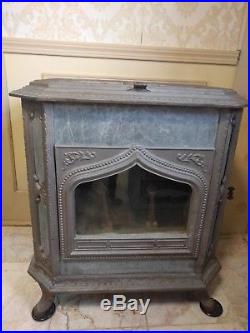
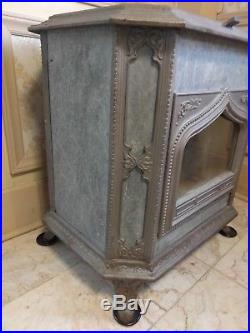
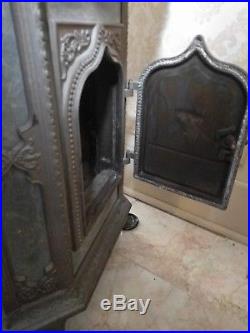
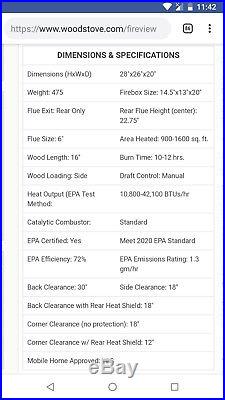
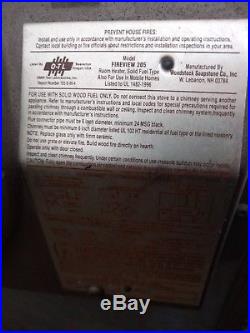
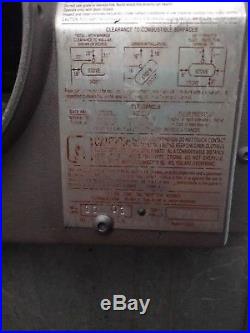

I love this wood stove but we took it out as our house renovations progressed. It heats really well. The item “Woodstock Fireview Soapstone Catalytic Wood Stove Side Loading, variable draft” is in sale since Thursday, December 20, 2018. This item is in the category “Home & Garden\Home Improvement\Heating, Cooling & Air\Fireplaces & Stoves\Heating Stoves”. The seller is “aylwojciechowsk0″ and is located in Clarence, New York. This item can’t be shipped, the buyer must pick up the item.
- Brand: Woodstock
- Non-Domestic Product: No
- Model: Fireview
- Modified Item: No
- Type: Wood Burning Stove
- Bundle Description: Rear Heat Shield, Base, Stove Pipe
- Material: Soapstone
- Country/Region of Manufacture: United States
- Style: Antique Style
- Height: 28″;
- Bundle Listing: No
- Depth: 20″;
- Modification Description: NONE
- Features: Variable Draft, Catalytic Combuster
- Color: Gray
- Heat Output: 42000
- Custom Bundle: Yes
- Room Coverage Area: 1,600 Sq. Feet
- Smart Home Protocol: NONE
- Width: 26″;

Incoming search terms:
- Fairview soapstone wood stoves
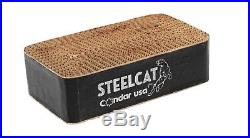

Genuine STEELCAT Steel Catalytic Combustor from Condar. A more durable honeycomb. Cant crack or crumble, even at highest operating temperatures. Less build-up of wood ash, within the honeycomb cells. Sharp steel edges actually cut ash as it goes up the flue. Better air flow, less cleaning maintenance. Engage your draft bypass at 100 degrees lower temperature than with ceramic honeycomb. Steel heats up faster than ceramic. Recovers more usable heat from wood smoke. Save wood – longer burn times and less reloading. Replacing a worn out combustor brings new life to an aging stove! Burn times can increase by 50%, while you can realize as much as twice the heat from the same piece of wood. Your chimney stays much cleaner and safer! , and you’re protecting our valuable air quality. For most stove owners, the savings in wood alone pay for the replacement combustor many times over, not to mention the increased safety and convenience. This 7″ x 4″ x 2 combustor fits Jotul models Alpha, Firelight 12, Series 3 & 8. A note about combustor / catalyst gaskets: Don’t install gasket around the combustor, even if your previous catalyst was wrapped in gasket. Simply install this combustor in stove’s catalyst receptacle. How they’re made. All Condar catalytic combustors are made of high-quality materials, and approved by the U. During the manufacturing process, ceramic honeycomb is dipped in a brown wash containing platinum and palladium – two elements scientifically engineered to maximize the catalytic reaction. The item “STEELCAT Catalytic Combustor for Jotul Wood Stoves” is in sale since Tuesday, October 22, 2013. This item is in the category “Home & Garden\Home Improvement\Heating, Cooling & Air\Air Conditioners & Heaters\Furnaces & Central Heating Systems”. The seller is “woodstovepro” and is located in Columbus, North Carolina. This item can be shipped to United States.
- MPN: CS-552
- Brand: Condar. “The Combustor Experts”
- Model: Steelcat
- Country of Manufacture: United States

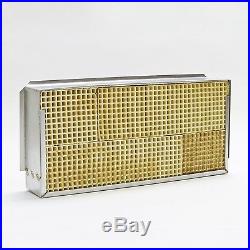
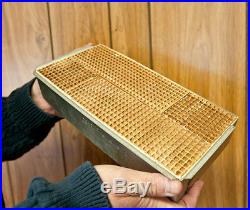

Genuine Condar Ceramic Catalytic Combustor. Fabricated at our factory in the foothills of Western North Carolina. Replacing a worn out combustor brings new life to an aging stove! Burn times can increase by 50%, while you can realize as much as twice the heat from the same piece of wood. Your chimney stays much cleaner and safer! , and you’re protecting our valuable air quality. For most stove owners, the savings in wood alone pay for the replacement combustor many times over, not to mention the increased safety and convenience. The combustor measures 5 inches by 10.5 inches by 2 inches, 16 cells per square inch and canned. A note about combustor / catalyst gaskets: Don’t install gasket around the combustor, even if your previous catalyst was wrapped in gasket. Simply install this combustor in stove’s catalyst receptacle. Modern woodstoves are exceptionally clean burning. Catalytic stoves using catalytic combustors emit between 1.3 and 3.5 grams of particulate matter per hour, depending on the model. Many of the stoves produced during the great woodburning boom (after the oil embargoes) of the 1970’s limited the amount of air going into the firebox in order to increase burn times. This resulted in lower firebox temperatures, incomplete combustion and a great deal of smoke. Some of these stoves put out more than 60 grams of particulate matter per hour. The problem got so bad that some cities actually limited the use of woodstoves and fireplaces. The woodstove industry responded by developing much cleaner stoves. Catalytic stoves use catalytic technology, like that used in your car, to make these stoves cleaner. The benefits of a catalytic combustor far outweigh the added cost. Properly operated, a catalytic combustor can reduce creosote and the danger of chimney fires by as much as 90%. Using a catalytic combustor increases the stove’s efficiency by up to 25%. In fact, it is likely that if you use your stove as a primary source of heat, your combustor will pay for itself before the end of the first heating season. IT’S THE LAW. Your combustor burns smoke so that your stove produces greater heat. When you remove a combustor, you cheat yourself out of warmth you’d otherwise be getting from your woodstove. Engaging your combustor properly allows the fuel load to burn longer in the slow-burn mode. This gives you the benefit of heating all night long with one load of wood. Combustors help prevent build-up of hazardous creosote in flues and chimneys. People who remove combustors risk unexpected chimney fires with damage to property and danger to people in the home. Removing a combustor is false economy. Catalytic woodstoves are specifically engineered to operate properly with a combustor. You and your neighbors will observe dirty smoke emissions from your chimney if you remove the combustor. Federal law requires in all jurisdictions that catalytic woodstoves be maintained and operated with combustors to reduce pollution over the entire life of the stove. How they’re made All Condar catalytic combustors are made of high-quality materials, and are approved by the U. During the manufacturing process, the ceramic honeycomb is dipped in a brown wash that contains platinum and palladium – two elements scientifically engineered to maximize the longevity of catalytic reaction. Keeping Manufacturers’ Warranties Valid Catalytic stoves are designed to operate at high temperatures only with the combustor engaged. If you remove the combustor you have an uncontrolled fire that can lead to eventual cracking of metal or damage to components that can render your woodstove inoperable. COST PER SEASON CERAMIC. COST PER SEASON STEEL. The more you utilize your catalytic combustor, the more you protect air quality and recover heat from your woodstove. When new, a catalytic woodstove emits less than 4.2 grams per hour of pollutants into the atmosphere , while a non-catalytic woodstove approved by the Environmental Protection Agency is allowed to emit up to 7.5 grams per hour of pollutants. Except during cold start-up when you should bypass your combustor, always use the combustor to recover heat from your smoke and protect the environment. After 12,000 hours of use, a combustor is expected to have lost 25% of its catalytic function. This is a natural process called wear-out. Molecules of platinum and palladium arent actually lost, but their binding to smoke pollutants that cant be removed by maintenance means gradually your woodstove will recover less heat from the smoke. Gradually youll notice less warmth, and eventually youll see dark pollutants from your chimney. White steam is a normal emission from any EPA-approved woodstove, and water vapor is a natural harmless byproduct of catalytic reaction. Conscientious owners replace their combustors after roughly 12,000 hours even if the combustor is intact. The payback from your additional heat recovery is well worth your cost. This USA winter weather chart helps you plan when to replace your catalyst. If you live in Zone 5 , Northern Indiana or Western Massachusetts for example , replacing the catalyst after two and a half seasons is cost-effective. Also see our STEELCAT. Options to consider upgrading. A steel combustor heats up faster than ceramic and you can engage your combustor at a lower temperature, recovering more heat from your wood. The item “AMERICAN-BUILT Catalytic Combuster for Blaze King Wood Stoves by Condar (CC-604)” is in sale since Tuesday, September 20, 2011. This item is in the category “Home & Garden\Home Improvement\Heating, Cooling & Air\Furnaces & Heating Systems”. The seller is “woodstovepro” and is located in Columbus, North Carolina. This item can be shipped to United States.
- Brand: Condar: “The Combustor Experts”
- Model: Ceramic
- Country of Manufacture: United States
- MPN: CC-604

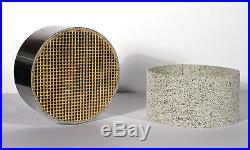

Genuine Condar Ceramic Catalytic Combustor. Fabricated at our factory in the foothills of Western North Carolina. Replacing a worn out combustor brings new life to an aging stove! Burn times can increase by 50%, while you can realize as much as twice the heat from the same piece of wood. Your chimney stays much cleaner and safer! , and you’re protecting our valuable air quality. For most stove owners, the savings in wood alone pay for the replacement combustor many times over, not to mention the increased safety and convenience. This 6″ by 3″ wide Combustor fits the following stoves. A note about combustor / catalyst gaskets: Don’t install gasket around the combustor, even if your previous catalyst was wrapped in gasket. Simply install this combustor in stove’s catalyst receptacle. Modern woodstoves are exceptionally clean burning. Catalytic stoves using catalytic combustors emit between 1.3 and 3.5 grams of particulate matter per hour, depending on the model. Many of the stoves produced during the great woodburning boom (after the oil embargoes) of the 1970’s limited the amount of air going into the firebox in order to increase burn times. This resulted in lower firebox temperatures, incomplete combustion and a great deal of smoke. Some of these stoves put out more than 60 grams of particulate matter per hour. The problem got so bad that some cities actually limited the use of woodstoves and fireplaces. The woodstove industry responded by developing much cleaner stoves. Catalytic stoves use catalytic technology, like that used in your car, to make these stoves cleaner. The benefits of a catalytic combustor far outweigh the added cost. Properly operated, a catalytic combustor can reduce creosote and the danger of chimney fires by as much as 90%. Using a catalytic combustor increases the stove’s efficiency by up to 25%. In fact, it is likely that if you use your stove as a primary source of heat, your combustor will pay for itself before the end of the first heating season. IT’S THE LAW. Your combustor burns smoke so that your stove produces greater heat. When you remove a combustor, you cheat yourself out of warmth you’d otherwise be getting from your woodstove. Engaging your combustor properly allows the fuel load to burn longer in the slow-burn mode. This gives you the benefit of heating all night long with one load of wood. Combustors help prevent build-up of hazardous creosote in flues and chimneys. People who remove combustors risk unexpected chimney fires with damage to property and danger to people in the home. Removing a combustor is false economy. Catalytic woodstoves are specifically engineered to operate properly with a combustor. You and your neighbors will observe dirty smoke emissions from your chimney if you remove the combustor. Federal law requires in all jurisdictions that catalytic woodstoves be maintained and operated with combustors to reduce pollution over the entire life of the stove. How they’re made All Condar catalytic combustors are made of high-quality materials, and are approved by the U. During the manufacturing process, the ceramic honeycomb is dipped in a brown wash that contains platinum and palladium – two elements scientifically engineered to maximize the longevity of catalytic reaction. Keeping Manufacturers’ Warranties Valid Catalytic stoves are designed to operate at high temperatures only with the combustor engaged. If you remove the combustor you have an uncontrolled fire that can lead to eventual cracking of metal or damage to components that can render your woodstove inoperable. COST PER SEASON CERAMIC. COST PER SEASON STEEL. The more you utilize your catalytic combustor, the more you protect air quality and recover heat from your woodstove. When new, a catalytic woodstove emits less than 4.2 grams per hour of pollutants into the atmosphere , while a non-catalytic woodstove approved by the Environmental Protection Agency is allowed to emit up to 7.5 grams per hour of pollutants. Except during cold start-up when you should bypass your combustor, always use the combustor to recover heat from your smoke and protect the environment. After 12,000 hours of use, a combustor is expected to have lost 25% of its catalytic function. This is a natural process called wear-out. Molecules of platinum and palladium arent actually lost, but their binding to smoke pollutants that cant be removed by maintenance means gradually your woodstove will recover less heat from the smoke. Gradually youll notice less warmth, and eventually youll see dark pollutants from your chimney. White steam is a normal emission from any EPA-approved woodstove, and water vapor is a natural harmless byproduct of catalytic reaction. Conscientious owners replace their combustors after roughly 12,000 hours even if the combustor is intact. The payback from your additional heat recovery is well worth your cost. This USA winter weather chart helps you plan when to replace your catalyst. If you live in Zone 5 , Northern Indiana or Western Massachusetts for example , replacing the catalyst after two and a half seasons is cost-effective. The item “AMERICAN-BUILT Catalytic Combuster for Blaze King Wood Stoves by Condar (CC-005)” is in sale since Tuesday, September 20, 2011. This item is in the category “Home & Garden\Home Improvement\Heating, Cooling & Air\Furnaces & Heating Systems”. The seller is “woodstovepro” and is located in Columbus, North Carolina. This item can be shipped to United States.
- Brand: Condar: “The Combustor Experts”
- Model: Ceramic
- Country of Manufacture: United States
- MPN: CC-005



Genuine Condar Ceramic Catalytic Combustor. Fabricated at our factory in the foothills of Western North Carolina. Replacing a worn out combustor brings new life to an aging stove! Burn times can increase by 50%, while you can realize as much as twice the heat from the same piece of wood. Your chimney stays much cleaner and safer! , and you’re protecting our valuable air quality. For most stove owners, the savings in wood alone pay for the replacement combustor many times over, not to mention the increased safety and convenience. The combustor is 7 inches by 9 inches by 2 inches thick. It contains 16 cells per square inch and is wrapped in a stainless steel can and fits the following Blaze King stove. A note about combustor / catalyst gaskets: Don’t install gasket around the combustor, even if your previous catalyst was wrapped in gasket. Simply install this combustor in stove’s catalyst receptacle. Modern woodstoves are exceptionally clean burning. Catalytic stoves using catalytic combustors emit between 1.3 and 3.5 grams of particulate matter per hour, depending on the model. Many of the stoves produced during the great woodburning boom (after the oil embargoes) of the 1970’s limited the amount of air going into the firebox in order to increase burn times. This resulted in lower firebox temperatures, incomplete combustion and a great deal of smoke. Some of these stoves put out more than 60 grams of particulate matter per hour. The problem got so bad that some cities actually limited the use of woodstoves and fireplaces. The woodstove industry responded by developing much cleaner stoves. Catalytic stoves use catalytic technology, like that used in your car, to make these stoves cleaner. The benefits of a catalytic combustor far outweigh the added cost. Properly operated, a catalytic combustor can reduce creosote and the danger of chimney fires by as much as 90%. Using a catalytic combustor increases the stove’s efficiency by up to 25%. In fact, it is likely that if you use your stove as a primary source of heat, your combustor will pay for itself before the end of the first heating season. IT’S THE LAW. Your combustor burns smoke so that your stove produces greater heat. When you remove a combustor, you cheat yourself out of warmth you’d otherwise be getting from your woodstove. Engaging your combustor properly allows the fuel load to burn longer in the slow-burn mode. This gives you the benefit of heating all night long with one load of wood. Combustors help prevent build-up of hazardous creosote in flues and chimneys. People who remove combustors risk unexpected chimney fires with damage to property and danger to people in the home. Removing a combustor is false economy. Catalytic woodstoves are specifically engineered to operate properly with a combustor. You and your neighbors will observe dirty smoke emissions from your chimney if you remove the combustor. Federal law requires in all jurisdictions that catalytic woodstoves be maintained and operated with combustors to reduce pollution over the entire life of the stove. How they’re made All Condar catalytic combustors are made of high-quality materials, and are approved by the U. During the manufacturing process, the ceramic honeycomb is dipped in a brown wash that contains platinum and palladium – two elements scientifically engineered to maximize the longevity of catalytic reaction. Keeping Manufacturers’ Warranties Valid Catalytic stoves are designed to operate at high temperatures only with the combustor engaged. If you remove the combustor you have an uncontrolled fire that can lead to eventual cracking of metal or damage to components that can render your woodstove inoperable. COST PER SEASON CERAMIC. COST PER SEASON STEEL. The more you utilize your catalytic combustor, the more you protect air quality and recover heat from your woodstove. When new, a catalytic woodstove emits less than 4.2 grams per hour of pollutants into the atmosphere , while a non-catalytic woodstove approved by the Environmental Protection Agency is allowed to emit up to 7.5 grams per hour of pollutants. Except during cold start-up when you should bypass your combustor, always use the combustor to recover heat from your smoke and protect the environment. After 12,000 hours of use, a combustor is expected to have lost 25% of its catalytic function. This is a natural process called wear-out. Molecules of platinum and palladium arent actually lost, but their binding to smoke pollutants that cant be removed by maintenance means gradually your woodstove will recover less heat from the smoke. Gradually youll notice less warmth, and eventually youll see dark pollutants from your chimney. White steam is a normal emission from any EPA-approved woodstove, and water vapor is a natural harmless byproduct of catalytic reaction. Conscientious owners replace their combustors after roughly 12,000 hours even if the combustor is intact. The payback from your additional heat recovery is well worth your cost. This USA winter weather chart helps you plan when to replace your catalyst. If you live in Zone 5 , Northern Indiana or Western Massachusetts for example , replacing the catalyst after two and a half seasons is cost-effective. Also see our STEELCAT. Options to consider upgrading. A steel combustor heats up faster than ceramic and you can engage your combustor at a lower temperature, recovering more heat from your wood. The item “AMERICAN-BUILT Catalytic Combustor for Blaze King Wood Stoves by Condar (CC-111)” is in sale since Tuesday, September 20, 2011. This item is in the category “Home & Garden\Home Improvement\Heating, Cooling & Air\Furnaces & Heating Systems”. The seller is “woodstovepro” and is located in Columbus, North Carolina. This item can be shipped to United States.
- Brand: Condar: “The Combustor Experts”
- Model: Ceramic
- Country of Manufacture: United States
- MPN: CC-111
- Material: Ceramic


























